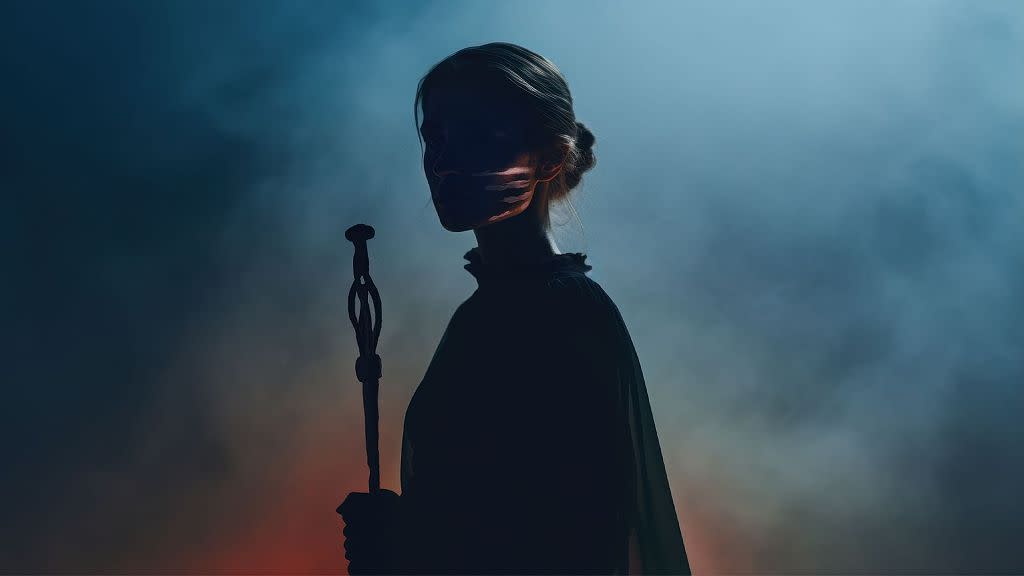Denmark’s National Museum explores the life of the formidable Viking sorceress Völva

Picture the stereotypical Viking - tall, bearded, adorned with a horned helmet, and most likely… male.
However, a new exhibit at Denmark’s National Museum is shedding light on the history of the Völva, a female Viking sorceress so formidable that even the fiercest male raiders trembled at her presence.
According to Viking folklore, her powers were so revered that even Odin, the king of the gods, sought her counsel.
The interactive exhibition, titled The Viking Sorceress, has been created together with experts from the Royal Danish Theatre.
What is a Völva and why were they feared?
During the Viking Age, considered to be from 793 to 1066, Norsemen known as Vikings undertook large-scale raiding, colonising, conquest and trading throughout Europe, they even reached North America.
But while many associate the Viking Age with all-conquering male warriors, curators say it was the Völva who possessed incredible power.

Little is known about the Völva - which means “staff bearer” in Old Norse - but historians believe she was a kind of fortune-telling female shaman in Old Norse culture.
There are numerous mentions of Viking sorceresses in old poems and sagas. They likely had high status in Viking society, offering conjured visions of the future to whole settlements, some even informed Viking royalty.
But it was their ability to "sejd”, a form of magic that could involve an out-of-body trance, that made them truly unique.
“The Völva had a very, very special role and people were very frightened of her. Even guards and strong Vikings were afraid of the Völva,” explains National Museum exhibition editor Mette Boritz.
“You were afraid of a person that can speak with the spirits, and that can look into the future and maybe change something in that future. So, she had an extreme power in those days.”
What's on display at the exhibition?
The Viking Sorceress presents an intriguing collection of ancient artefacts and interactive displays to tell the story of the Völva.
One of the main highlights of the exhibition is the remains from a grave discovered at the Fyrkat ring fortress in Denmark, believed to be the resting place of a Völva from around 980.
The grave contained a collection of objects that experts believe had ritual significance, including several metal staffs, a bronze bowl from faraway lands, bird and mammal bones, plus a leather bag containing a hallucinatory herb.


Buried at one of King Harald Bluetooth's ring forts, researchers believe the woman was a Viking sorceress in the king’s own entourage.
One chunk of the grave was never excavated. X-rays later revealed the lump of soil contains the Völva’s mouth, a faint row of teeth can even be seen.
“That is a very interesting coincidence because the Völva’s mouth is mentioned in several sagas as being something special. It is from that mouth spells came. It's from her very mouth she would be chanting, singing, charms would come.” explains National Museum curator, Peter Pentz.


Another display at the exhibition is the Lille Karleby hoard, a collection of 392 objects discovered in 2015 in a Danish village. This hoard includes a variety of jewellery, amulets, and beads from regions as far-flung as Ireland, the Mediterranean, and the Middle East.
“Viking hoards are usually bullion hoards, containing silver, silver clips, silver bars. Value, pure money value for buying, selling. But this one, this hoard contains amulets, beads, which could also be interpreted as a kind of magic stuff,” says Pentz.
Visitors can also find interactive elements and theatrical installations here. There's Völva's garden, a recreated mystical environment, as well as depictions of Ragnarök, Norse mythology’s version of doomsday.
“The Viking Sorceress” opens at the National Museum of Denmark on 27 June.

 Yahoo News
Yahoo News 
